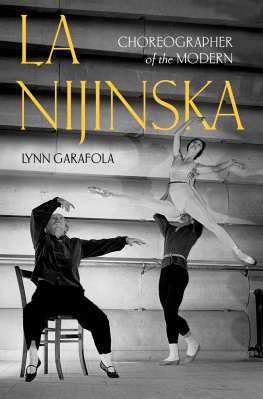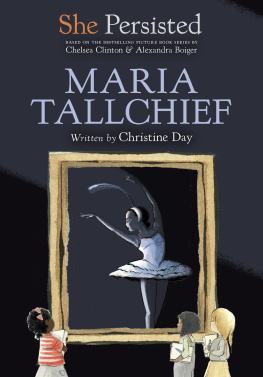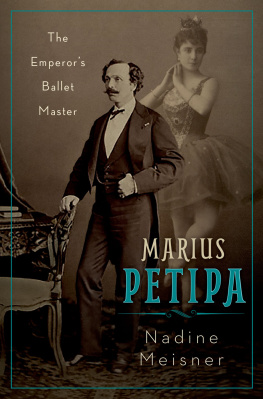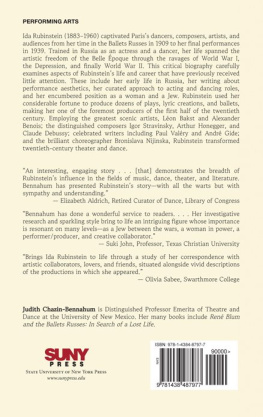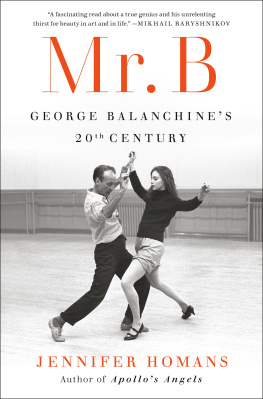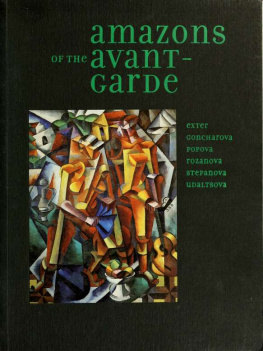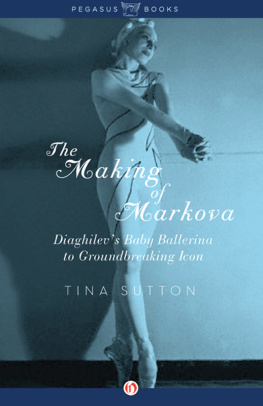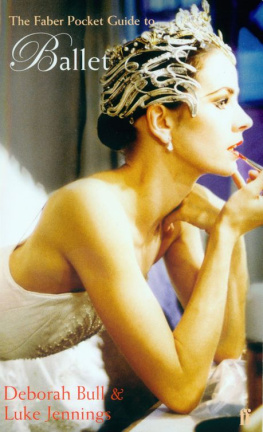La Nijinska
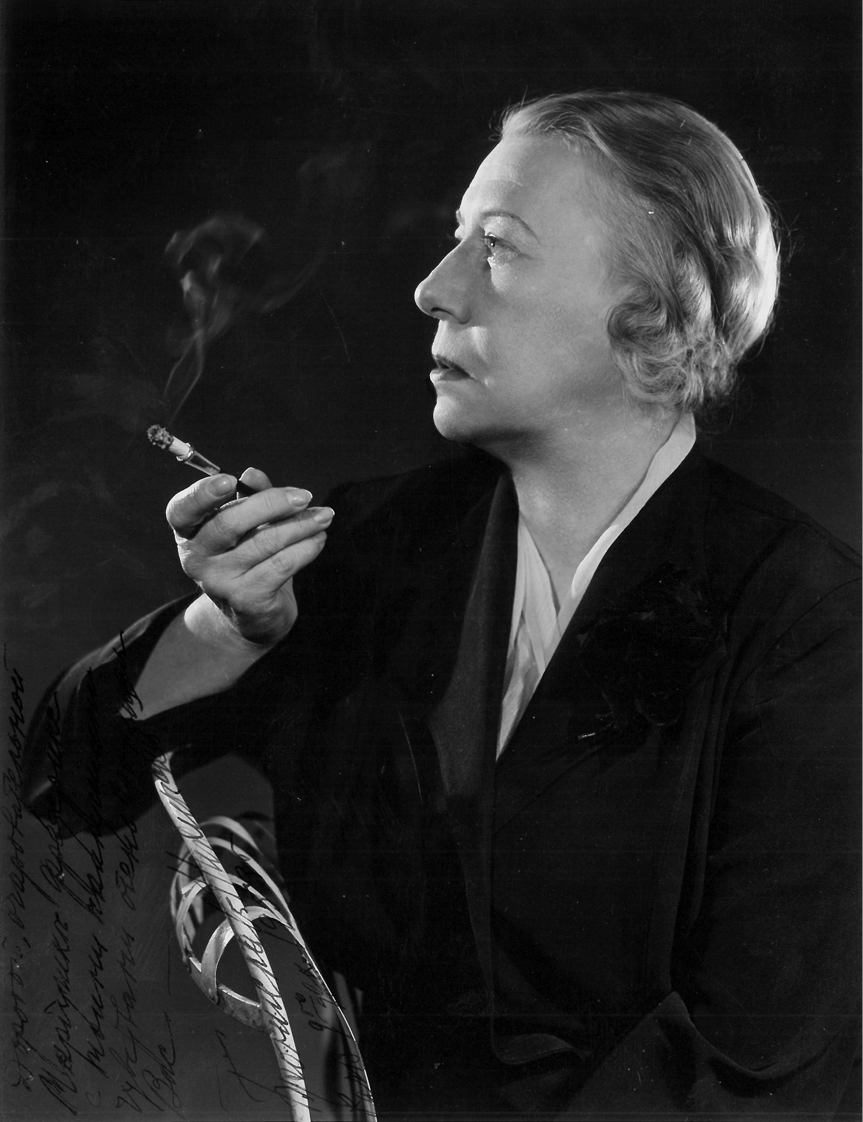
Bronislava Nijinska, 1953.
Photo by Serge Lido, inscribed to dear, charming Mariusha Fredericksz, 1953. Collection of Marie Nugent-Head.

Oxford University Press is a department of the University of Oxford. It furthers the Universitys objective of excellence in research, scholarship, and education by publishing worldwide. Oxford is a registered trade mark of Oxford University Press in the UK and certain other countries.
Published in the United States of America by Oxford University Press
198 Madison Avenue, New York, NY 10016, United States of America.
Lynn Garafola 2022
All rights reserved. No part of this publication may be reproduced, stored in a retrieval system, or transmitted, in any form or by any means, without the prior permission in writing of Oxford University Press, or as expressly permitted by law, by license, or under terms agreed with the appropriate reproduction rights organization. Inquiries concerning reproduction outside the scope of the above should be sent to the Rights Department, Oxford University Press, at the address above.
You must not circulate this work in any other form and you must impose this same condition on any acquirer.
CIP data is on file at the Library of Congress
ISBN 978-0-19-760390-1
eISBN 978-0-19-760392-5
DOI: 10.1093/oso/9780197603901.001.0001
To Eric Foner and Daria Rose Foner
with love
Contents
La Nijinska: Choreographer of the Modern was made possible through the generosity of numerous individuals and institutions. First and foremost I want to thank the John Simon Guggenheim Memorial Foundation and the Dorothy and Lewis B. Cullman Center for Scholars and Writers for their fellowship support, and Columbia Universitys Harriman Center for translation assistance. Second, I wish to acknowledge my debt to the numerous archivists and librarians who opened their collections to me. This book is the first to draw extensively on the Bronislava Nijinska Collection, housed in the Music Division of the Library of Congress. Elizabeth Aldrich, the Librarys former Curator of Dance, was unwavering in her enthusiasm and unstinting in her support during the early stages of the project, when the collection had yet to be fully catalogued; I am deeply grateful to her, as I am to her successor, Libby Smigel. I am equally grateful to Jane Pritchard, the Curator of Dance at the Victoria and Albert Museum, who was ever-generous in guiding me to documents concerning Nijinskas activities in England and to newly acquired Nijinska costumes, designs, and memorabilia. I am indebted to Irina Klyagin for locating sources at Harvard Universitys Houghton Library and to Norton Owen for guiding me to material at Jacobs Pillow. I owe a special debt of gratitude to Linda Murray, Curator of the New York Public Librarys Jerome Robbins Dance Division, and to her colleagues and staff, who provided critical help during the pandemic when the library was closed to outsiders. As always, I am indebted to the late Elizabeth Souritz of Moscow for her inspiration and help in too many ways to list; I am equally grateful to her daughter Irina Gruzheva; her colleagues Georgy Kovalenco and Sergei Konaev, who led me to crucial information and sources; and especially Vyacheslav V. Ivanov, for publishing Nijinskas earliest extant writings in the Russian journal Mnemozina.
I take this opportunity to express my thanks to Rachel Atman of the Carnegie History center in Bryan, Texas, for access to the Ana Ludmilla Gee Collection; Robert Davis, Librarian for Russian, Eurasian, and East European Studies, Columbia University; Sari Mariia Harjanne and the staff of the Carina Ari Library, Stockholm; Evgenia Iliukhina, Curator of the Larionov-Goncharova Collection, Tretiakov Gallery, Moscow; Sergei Laletin, St. Petersburg State Museum of Theatre and Music; Anne Meadmore, Royal Ballet School, London; Michelle Potter, Inaugural Curator of Dance, National Library of Australia; Karen S. Raines, Special Collections, University of California, Riverside; John Neumeier and Dr. Hans-Michael Shfer, Stiftung John Neumeier, Hamburg; Jonathan Gray, Editor, Dancing Times; Oliver Halsman Rosenberg of the Philippe Halsman Archive; Anna-Marie Holmes; Peter Kayafas, Eakins Press Foundation; Nadine Stadler, George Kirsta Collection, University of Salzburg; the staff of the Teatro Coln Library, Buenos Aires; and Heidy Zimmermann, Paul Sacher Stiftung, Basel. This book is much the richer because of their generosity.
Third, I express my gratitude to the numerous colleagues who have shared their knowledge, thoughts, and research with me: in Argentina, Professor Susana Tambutti, Universidad Nacional de Buenos Aires, and Paulina Antacli, Universidad Nacional de Crdoba, for helping me understand the world that Nijinska inhabited in Buenos Aires; in Brazil, Arnaldo Leite de Alvarenga and Beatriz Cerbeno, for underscoring the importance of Maria Olenewa, and Tatiana Leskova, for sharing her memories of Nijinska; in Poland, Maria Dworakowska, Polish Theater Institute, Warsaw, critic and curator Jadwiga Grabowka Majewska, and musicologist Magorzata Komorwoska, for guiding me to written and visual sources elucidating Nijinskas experience with the Polish Ballet; Sue Lonoff de Cuevas for sharing material and information about the Marquis de Cuevas; Marie Nugent-Head for allowing me to publish the portrait of Nijinska inscribed to her aunt; Patrizia Veroli and Carmelo A. Zapparrata for Nijinskas engagements in Italy; art historian Anthony Parton of the University of Durham for sharing his thoughts about Natalia Goncharova as well as showing me her little-known portrait of Nijinska; George Jackson, for material about Nijinskas ill-fated season at the Vienna Staatsoper; the Ukrainian theater scholars Virlana Tkacz and Irena R. Makaryk for reading Tower for sharing Nijinskas letters to her grandmother, Nina Sirotinine; Laurie Kaden, for helping me access the papers of Nijinskas dancer Joyce Berry; Ann Hutchinson Guest, for her reminiscences of Nijinska at Jacobs Pillow; Sergey Belenky, for alerting me to Russian sources I would not otherwise have known about; Cheryl Forrest, for sending me a copy of her book with Georgia Snoke about Roman Jasinski and sharing her research with me; Carlos Carvajal, for his reminiscences of Nijinska in the Grand Ballet du Marquis de Cuevas; and my London friends and colleagues Millicent Hodson, Stephanie Jordan, Stacey Prickett, Tamara Tomic-Vajagic, and especially Geraldine Morris, who spent hours talking to me about working with Nijinska in the 1960s. Finally, I wish to thank my colleagues at Columbia Universitys Harriman Institute for their encouragement and willingness to answer questions about early Soviet cultural life, and to my former colleagues in the Barnard College Dance Department, especially Katie Glasner, for sharing thoughts about choreography and the experience of women in the ballet world.
I owe a profound debt of gratitude to my translators. First and foremost, I wish to thank Dina Odnopozova, who deciphered hundreds of pages to bring Nijinskas diaries and letters and those of her numerous correspondents to English life, cheerfully answering last-minute calls for a quick translation or for explanation of a grammatical point. For Nijinskas letters in Polish to her mother I am grateful to Tom Agnessi and his class of translation students at the University of Lviv, and to Eliza Cushman Rose for translating most of the materials relating to Nijinskas involvement with the Polish Ballet. Sofya Deak and Larissa Babji provided summaries and translations of Ukrainian documents; Sandra Chiritescu, Sophie Schweiger, and Sven Beckert helped with German-language documents and press. Maria Cooks translation assistance at a very early stage of the project was invaluable. I also wish to thank Jayne Cosson for her research assistance and Thom Lloyd for photographing papers relating to the defection of Serge Lifars brother Leonid in Kievs Cheka Archives.

